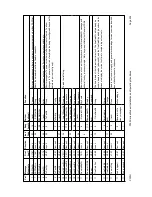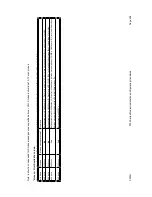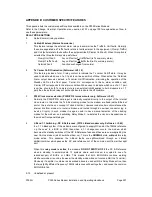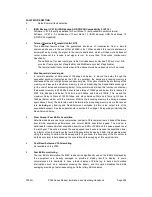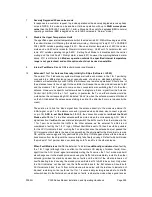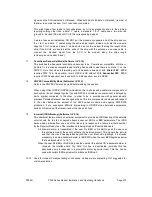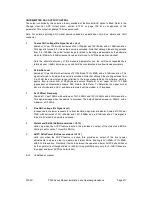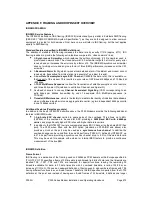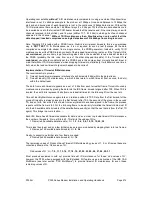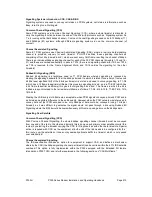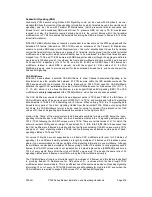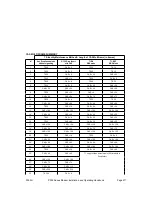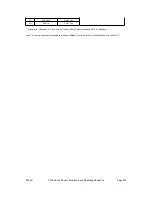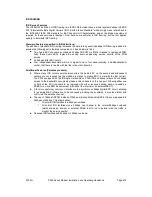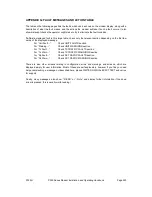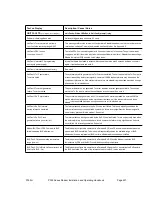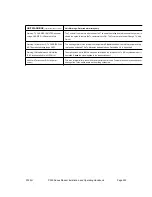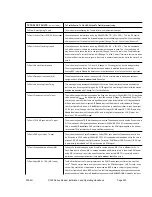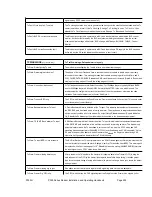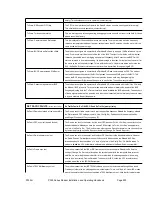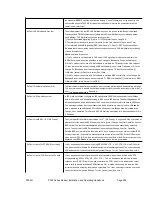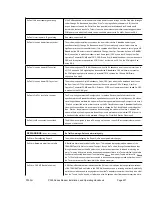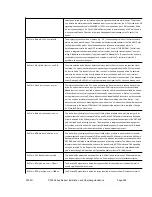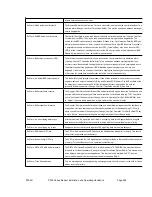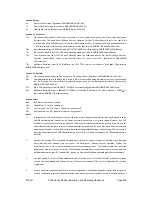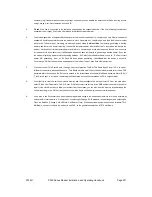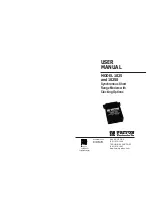
P300H
P300 Series Modem Installation and Operating Handbook
Page 219
IDR FRAMING
IDR Service Features
The addition of standard IDR framing increases the data rate by exactly 96kbps. IDR framing is added to
provide the following extra features compared to `closed network` links:
The INTELSAT definition of IDR framing is in IESS 308. Eutelsat have a similar system defined in EESS
203 "Intermediate Rate Digital Carriers (IDC), Earth Station Standard" which simply cross refers back to
the INTELSAT IESS 308 standard for the Channel Unit Characteristics, and so the Modem equipment
required for these services is identical. From here on we will refer to IDR framing, but the text applies
equally to Eutelsats IDC framing.
Standard Features (specified in IDR definitions)
Two Audio ESC channels, encoded as 32kbps ADPCM. As IDR is intended to replace all FDM
links, these Audio ESCs replace the analog audio engineering service circuits of the FDM
service.
An 8kbps digital ESC circuit.
Four independent backward alarms, to signal to up to four sites receiving a multidestinational
carrier, that there is trouble with the link in the other direction.
Additional Features (Paradise products)
Where many IDR carriers exist between sites, the Audio ESC on the second and subsequent
carriers are not required (as the mandatory station to station ESC is met with the first carrier).
The P300 equipped with the IDR option (standard on P300-IDR and above) allows 32 or 64kbps
access to the bandwidth occupied by these audio channels on the Aux port. Allowing either one
or both of the ESC channels to be replaced with either revenue bearing data, or possibly a
PRBS for on-line BER measurement (with either the internal or an external BERT).
A far more useful
asynchronous
interface to the synchronous 8kbps digital ESC circuit, allowing
for example M&C information to be conveyed providing the possibility to provide distant end
control via the satellite channel.
The use of 16kbps ADPCM instead of 32kbps, allowing both audio ESC's to be compressed into
32kbps not 64kbps. This allows either:
*
All normal IDR facilities in a 64kbps overhead
*
All normal IDR facilities
plus
a 32kbps Aux channel in the normal 96kbps overhead
(which allows an internal or external PRBS test to run in parallel with the traffic to
monitor the service quality)
Reduced IDR facilities with 64kbps or 32kbps overhead.

